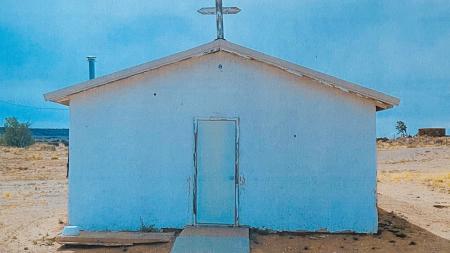The Differences Between Sunnis and Shia

Douglas Howard with a cup of coffee
Douglas Howard, professor of history at Calvin College, says the conflict that began this weekend between Saudi Arabia and Iran, both of whom hold to different expressions of Islam, is about politics as much as religion.
“We miss what is going on if we just focus on the theological differences between the two,” said Howard.
“Saudi Arabia has been a centerpiece of American authority in the Middle East. Iran has been seen as the great alternative to the American system. Often, they are on different sides of issues.”
Nonetheless, the standoff, in which both countries have broken off diplomatic ties with one another, offers the chance to consider the contrast between two branches of Islam.
Saudi Arabia’s majority population is made up of Sunni Muslims, while Iran is home to a majority population of Shia Muslims.
“The differences stem from how the two think about the death of the Prophet Muhammad, which leads to differences about how they view the nature of authority,” said Howard, an expert on the history of the Ottoman Empire.
A split between the two groups emerged after Muhammad died in 632 without appointing a successor to lead the Muslim community, and disputes arose over who should be the leader.
Both hold many of the basic beliefs of Islam and follow the five tenets of Islam: They fast during Ramadan, pledge to make a pilgrimage to Mecca, which is in Saudi Arabia, practice ritual prayer, give charity to the poor, and dedicate themselves to Islam.
But, said Howard, they have taken different approaches in the centuries since the prophet’s death. Sunnis emphasize God’s power in the public and political realm, while Shia value the spiritual experience of suffering.
The Sunni group has ultimately focused more on scripture, the Quran and other writings, while the Shia have tended to put more emphasis on the person of the prophet and his immediate successors.
“The Sunnis conceive of a covenant of God’s people under the guidance of elders. They have put a lot of emphasis on the right interpretation of scriptures and the law,” said Howard.
Sunnis, he said, believe you experience God through God’s law, while Shia identify with the experience of the prophet.
“The Shia think more in terms of the saintly family of the prophet and see God’s presence in a special way in Muhammad.”
This could be viewed as being similar to the Jewish Old Testament’s focus on God’s law versus the New Testament experience in which we identify with the life of Christ, said Howard.
For the sake of further comparison, he said, you could see the Sunnis and Shia as being distinct denominations: Shia as Roman Catholic and Sunnis as conservative Protestants.
Roman Catholics, while being committed to the truth of the Bible, also practice many rituals and have a host of saints. In Protestantism, the Bible is paramount.
“When you go into their homes, there is a different feeling and atmosphere in each,” said Howard.
Both branches, he said, include worshipers ranging from secular to fundamentalist.
According the New York Times, more than 85 percent of the world’s 1.5 billion Muslims are Sunni. They live across the Arab world, as well as in countries like Turkey, Pakistan, India, Bangladesh, Malaysia and Indonesia.
Iran, Iraq and Bahrain are largely Shia.
Important to note, said Howard, is that Muslims across the world are not necessarily in agreement with the approaches of Islam reflected in Saudi Arabia and Iran.
“Each of them is a narrow case and representation of Islam,” he said, “The same Sunni approach taken in Saudi Arabia, for example, is different in countries such as America and Turkey.”
Howard adds that Sunni and Shia groups have clashed over the centuries, sometimes over matters of faith mixed with the politics of the time.
Howard also said he traces this current struggle between Saudi Arabia and Iran to the U.S. invasion and subsequent pull-out from Iraq, which led to a power vacuum between Sunnis and Shia in that country and in surrounding regions.


